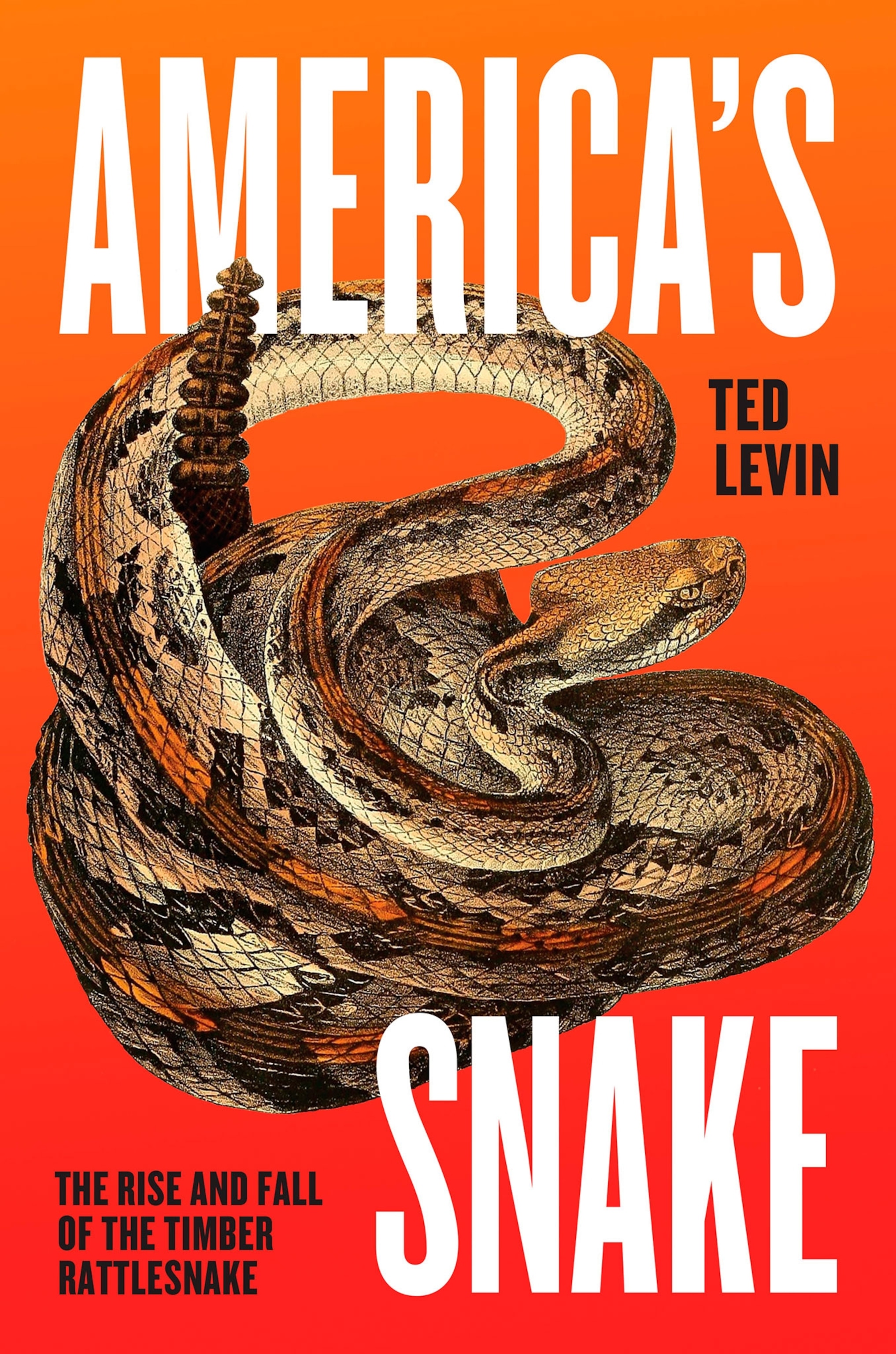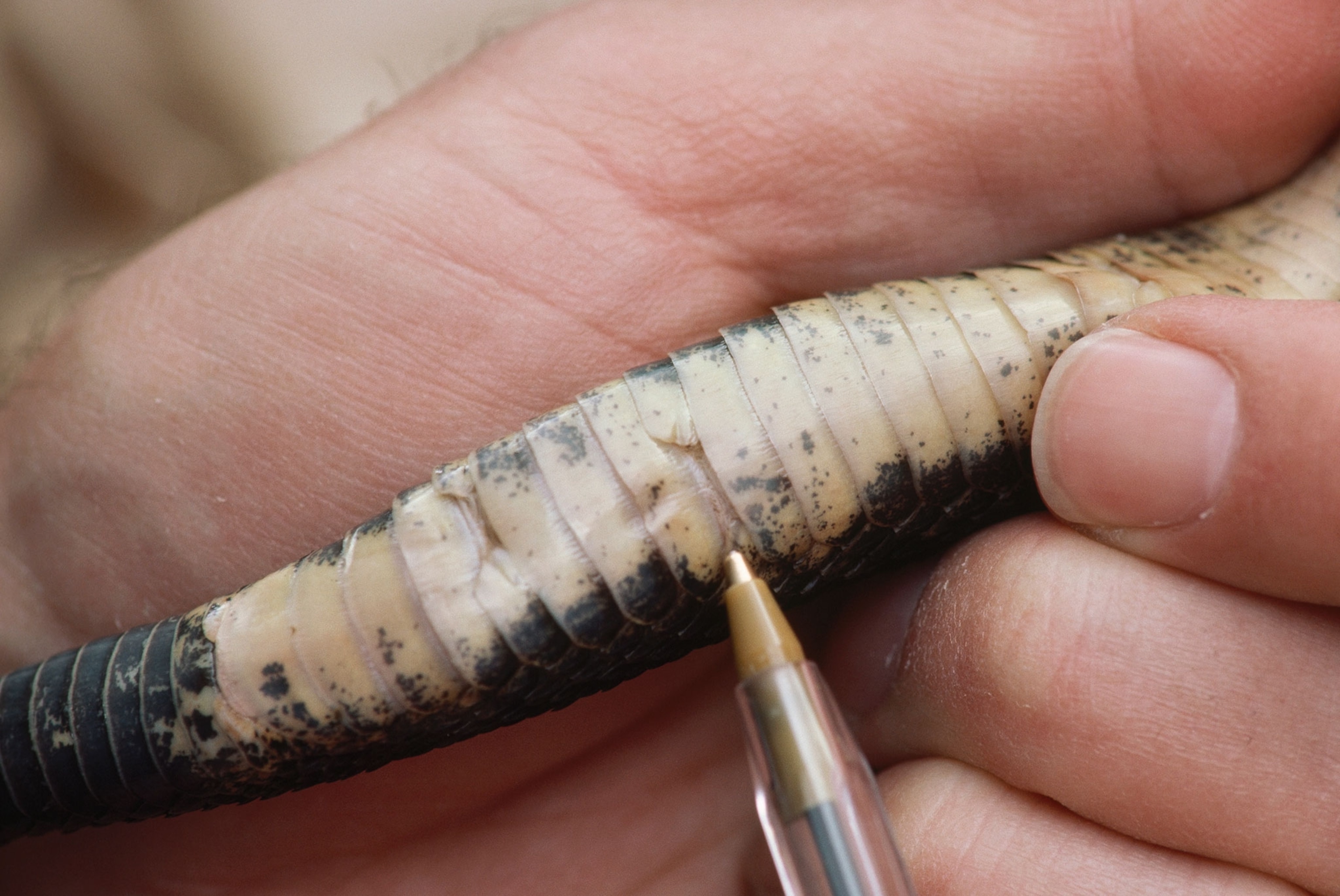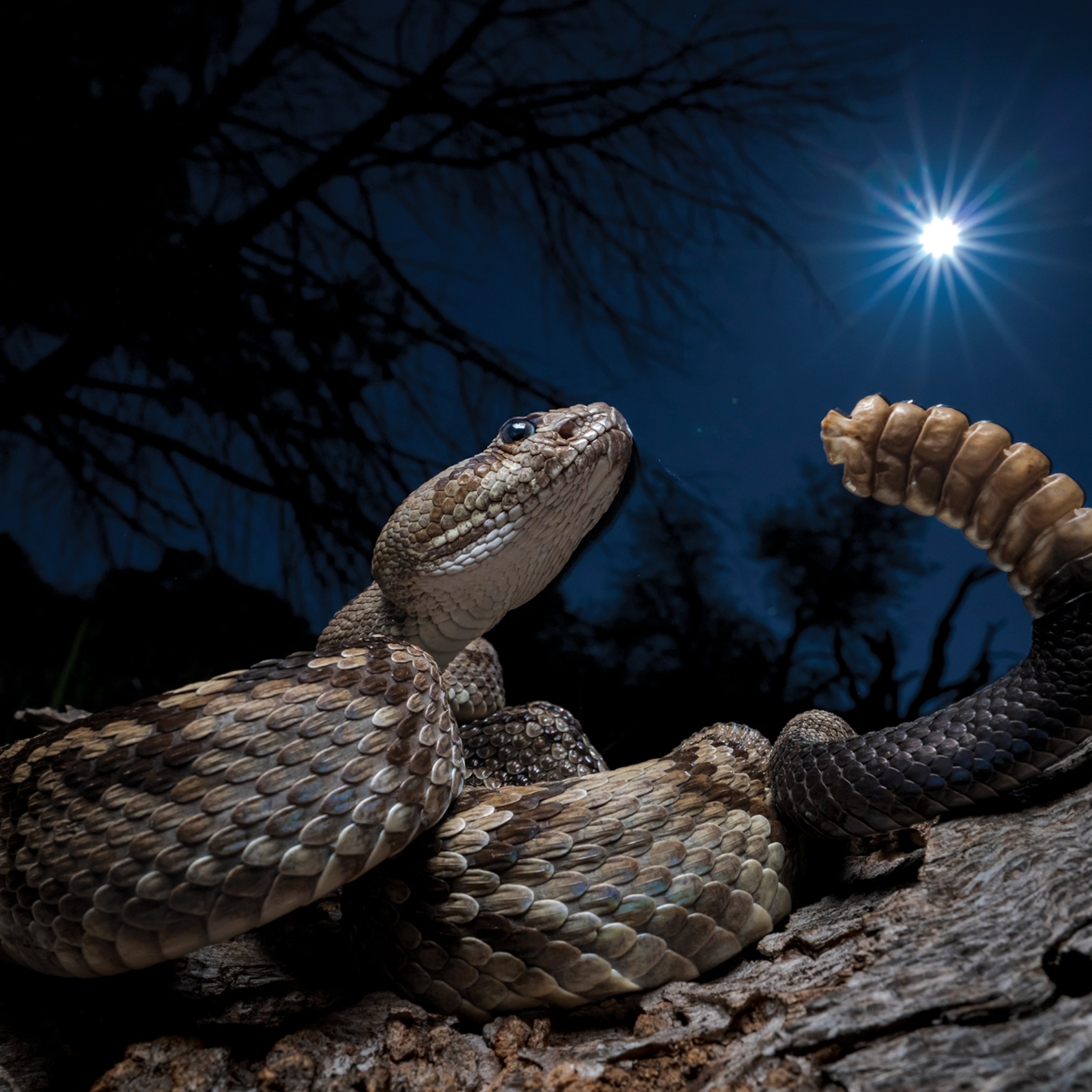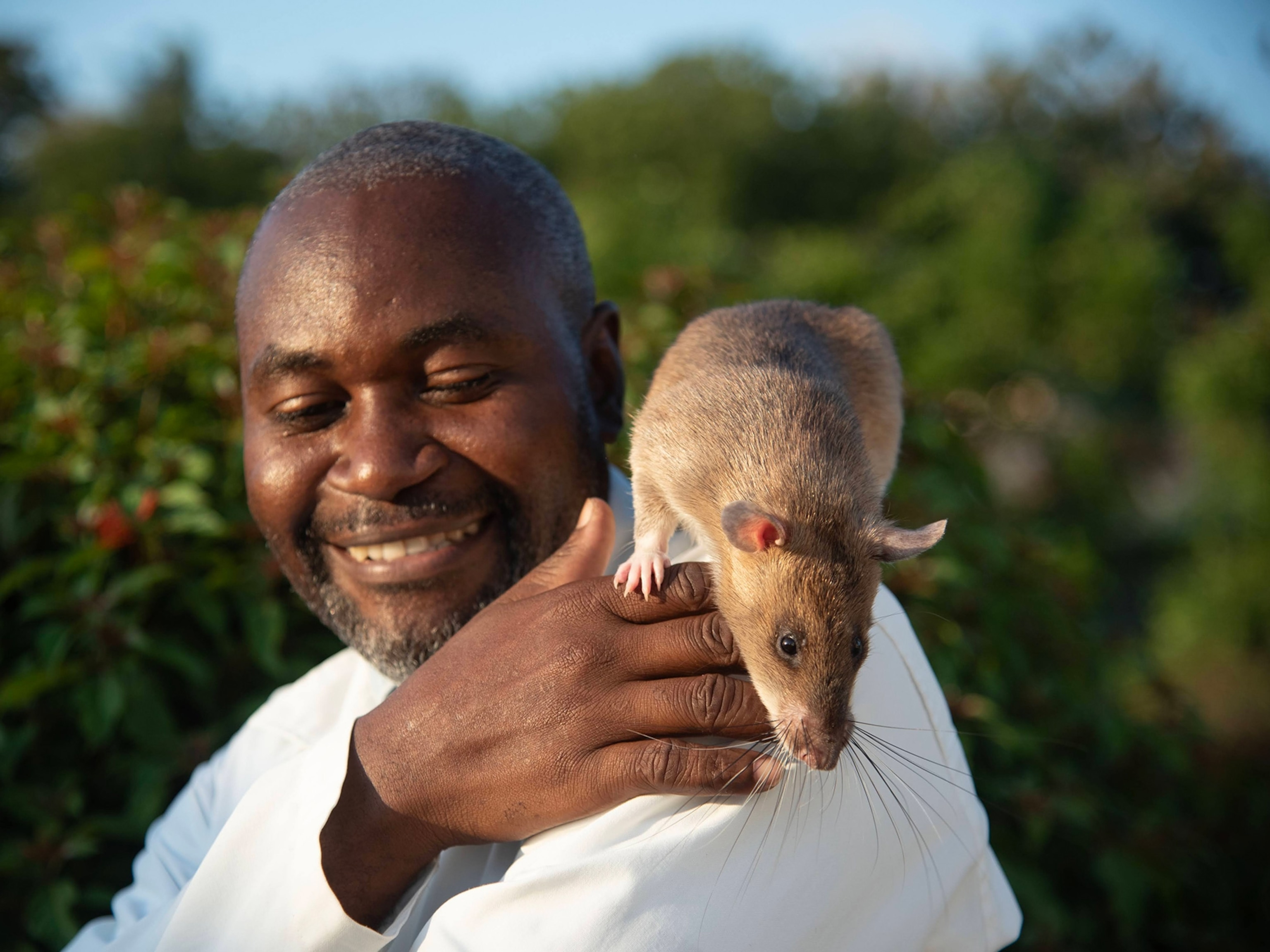
Rattlesnakes Lead 'Hungry, Horny, Gregarious' Lives
They are surprisingly social and slither long distances for sex.
Benjamin Franklin once promoted rattlesnakes as a symbol of the emerging United States. These days the word rattlesnake is most likely to be applied to a crooked, devious person. Yet Ted Levin has been under their spell ever since he was a boy and saw a timber rattlesnake shed its skin at the Staten Island Zoo. In his new book, America’s Snake: The Rise and Fall of the Timber Rattlesnake, Levin takes us inside the world of rattlesnakes and introduces us to the dedicated, sometimes eccentric band of scientists and enthusiasts who study and champion them. [Read about a modern rattlesnake roundup.]
When I caught up with Levin by phone recently at his home in Vermont, he explained how our primal fear of snakes goes back to the dawn of time; why rattlesnakes may hold the key to eradicating Lyme disease; and how, far from being scary monsters, these elusive predators are surprisingly social. [Meet the snake that pretends to be a spider.]
You call rattlesnakes “limbless, scaled-down versions of ourselves: hungry, horny, gregarious.” Tease out the similarities.
First of all, they’re social. Research done several years ago by Rulon Clark at Cornell University looked at the DNA of rattlesnakes collected in little groups. He discovered snakes that banded together in pods were related. When he removed some of these snakes for as much as a couple of years, then put them back into the population, the snakes would recognize each other. Siblings would come together again to the exclusion of snakes from other parentage.

Horny? Males take more than one mate and females sometimes do as well. Basically, males stop doing whatever they’re doing when the season is right, get on the trail of a receptive female, and follow it for a mile or more until they get to the female shedding sites. If the female they’ve been following hasn’t quite shed, the male waits around. If another male comes in, there’s a contest, like disembodied arm-wrestling. They rise up, wrap themselves around each other until the bigger, stronger snake pushes the younger snake down and it leaves.
Destruction of rattlesnakes has been popular sport since the 1600s and bounties on them were paid in New York until the 1970s. Yet being killed by a rattlesnake is a rarity. Why do we fear rattlesnakes so?
It’s not just rattlesnakes. I think we fear all snakes. Until I began to research this book in earnest, I thought it all went back to the Book of Genesis, the Judeo-Christian story of Adam and Eve in the Garden of Eden. But now I realize that that story goes way back to the dawn of primates, when venomous snakes were their principle predators. I think we carry that with us, like the fear of the dark.
In Massachusetts, some towns had what they called a rattlesnake bee. People went out in the fall, when the snakes were gathering by their dens, and often killed up to a hundred of them in one afternoon. In eastern Iowa, people competed to kill rattlesnakes with bushels of corn as prizes.
I was fascinated by how social rattlesnakes are. Tell us about their dens and how they live.
When they’re hunting, they’re pretty much independent. When they hibernate, they’re social. One of the most interesting aspects that has come out of William S. Brown’s research is that females stay with the babies, which are called neonates, for a week to 10 or 12 days, until the babies shed. They’re there to make sure that a raccoon or a red-tailed hawk, or even a person, isn’t going to destroy their breeding stock for the year. Then the females will go off, leaving a scent trail on the ground that the young snakes intuitively find and track back to the female’s den. The dens are where they spend the winter. In the fall, they gather in front of the dens and again in spring, when they’re waking up.

The rattle itself is a fascinating tool. What’s it sound like and how do you feel when you hear it?
If you hear it and you’re not expecting it, it’s quite unnerving. Depending on the size of the snake, it could sound like a cricket. If it’s a large snake with a number of segments to the rattle, it can sound very loud. There’s no question what you’re listening to, even if you have never heard it before.
It’s made of keratin—the same protein our fingernails and hair are made of. If you can imagine a snake shedding its skin, at the end of the tail the skin is thickened and constricted. When the snake sheds, the constriction moves back but doesn’t leave the tail zone. Each thickened piece at the end of the tail becomes a new segment of the rattle. So every time a snake sheds it adds another segment. You can guess the age of a rattlesnake by the number of rattles, assuming the snake has never had its rattle broken off.
Tell us about the pioneering work of William S. Brown, whom you call “the Jane Goodall of rattlesnakes.”
Bill is a professor emeritus at Skidmore and one of the leading herpetologists in the U.S. He has been studying the same population in the foothills of the Adirondack Mountains since the Jimmy Carter Administration. It is the longest single study of a population of reptiles by one individual in the U.S., possibly on the planet.
He developed a numerical system by cutting belly scales to give them a kind of tattoo or indelible scar. He’s able to recapture snakes, sometimes after an absence of up to 15 years, and know who they are and when he first marked them. It’s because of Bill that we know that timber rattlesnakes can live at least to the age of 45. A 45-year-old female he caught was even giving birth still.
Today, rattlesnakes face acute challenges, from the lack of genetic diversity to a deadly fungal outbreak. Tell us about those.
The best solution, which states are grappling with but biologists would like to see, is to reintroduce rattlesnakes into areas where they have been extirpated, like has been done with the Florida panther or bald eagles. But, as you can imagine, it’s pretty difficult to sell a political body like a state legislature on the idea of reintroducing venomous snakes.
The fungal outbreak has been severe in New Hampshire and the Blue Hills of Massachusetts. Nobody’s quite sure where the fungus came from, whether it’s native to the soil of the U.S. or whether it’s from Europe or Asia and has gotten into the system, where global warming has favored it.

The lynchpin of a healthy population of timber rattlesnakes is that males can go on these cross-country mating treks in mid-summer to shedding sites where females gather. You may have females from three or four dens at that shedding site, so there is an opportunity for the male to sow his seed with females from different dens. Unfortunately, timber rattlesnakes are quite slow-moving. If they cross a road and feel the vibration of oncoming vehicles, they bunch up, like a coiled spring, and just sit there. It doesn’t take a whole lot of cars to virtually eliminate the successful crossing of that road by rattlesnakes.
Lyme disease is a huge—and growing—problem. Tell us about Doug Fraser’s interesting research and how communities with rattlesnakes have seen a reduction in Lyme cases.
Doug has been looking at the population of timber rattlesnakes in Glastonbury, Connecticut, since he was a high school kid. In the process, knowing that the reservoir hosts of Lyme disease are principally chipmunks and white-footed mice, and that these are also the two principle food items for timber rattlesnakes, he began to wonder whether they influenced the transfer of Lyme disease to humans.
He looked at the incidence of Lyme disease per 100,000 of the population in a series of towns going up and down the Connecticut River and discovered that Glastonbury had the least incidence of Lyme disease of any of the Connecticut River towns. He won’t come out and say rattlesnakes will stop Lyme disease. But certainly they are one of the agents in eliminating the principle reservoir hosts.

What do you love most about rattlesnakes, Ted? And why is it important that we save them?
They are fascinating and gorgeous to look at. They can see colors we can’t see and read the world with the tips of their tongues. They communicate through pheromones, in a language we don’t really understand. The more you look into them, the more fascinating they are.
It’s important we save them because they’re here. We are losing species all over the globe. And we have an opportunity to keep this one. It’s the last of the apex predators in the Northeastern U.S. They’ve made it all these years, where other creatures like wolves or mountain lions have not. Rattlesnakes are still here.
This interview was edited for length and clarity.
Simon Worrall curates Book Talk. Follow him on Twitter or at simonworrallauthor.com.








